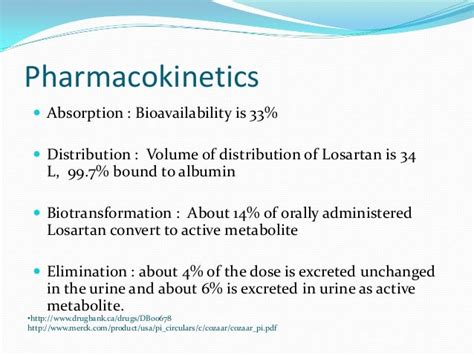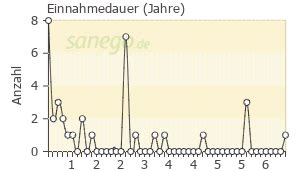Intro
Discover key facts about Losartan, a blood pressure medication, including its uses, benefits, and potential side effects, to better manage hypertension and cardiovascular health.
Losartan is a medication that has been widely used to treat high blood pressure and protect the kidneys from damage due to diabetes. It belongs to a class of drugs known as angiotensin II receptor blockers (ARBs), which work by blocking the action of a natural chemical that narrows blood vessels, allowing blood vessels to widen and improve blood flow. The importance of understanding losartan and its effects cannot be overstated, as it has become a crucial component in the management of cardiovascular diseases and diabetic nephropathy. In this article, we will delve into the key aspects of losartan, exploring its benefits, mechanisms, and practical applications, as well as discussing statistical data and real-world examples to provide a comprehensive overview.
High blood pressure, or hypertension, is a significant health concern that affects millions of people worldwide. It can lead to severe complications, including heart disease, stroke, and kidney disease, if not properly managed. Losartan, with its ability to lower blood pressure and reduce the risk of stroke, has become a vital tool in the fight against these conditions. Moreover, its role in protecting the kidneys from damage in diabetic patients has made it an essential medication for those suffering from diabetes. As we explore the world of losartan, it becomes clear that understanding this medication is not just about grasping its pharmacological properties but also about recognizing its impact on public health.
The mechanism of action of losartan is complex and involves the renin-angiotensin-aldosterone system (RAAS), a vital regulator of blood pressure. By blocking the action of angiotensin II, losartan prevents the constriction of blood vessels, thereby reducing blood pressure and decreasing the strain on the heart. This mechanism not only helps in managing hypertension but also has protective effects on the kidneys, especially in patients with diabetic nephropathy. The benefits of losartan extend beyond blood pressure control, as it has been shown to reduce the risk of stroke and kidney disease progression, making it a valuable asset in the management of cardiovascular and renal diseases.
Introduction to Losartan

Benefits of Losartan
The benefits of losartan are multifaceted and significant. Some of the key advantages include: - Lowering blood pressure: Losartan helps to reduce blood pressure in patients with hypertension, thereby decreasing the risk of heart disease and stroke. - Kidney protection: It has been shown to protect the kidneys from damage in diabetic patients, slowing the progression of diabetic nephropathy. - Reducing stroke risk: Losartan has been proven to reduce the risk of stroke in patients with hypertension and left ventricular hypertrophy. - Improving cardiovascular outcomes: By reducing blood pressure and protecting the kidneys, losartan contributes to improved cardiovascular outcomes in patients with heart disease.How Losartan Works

Side Effects and Precautions
Like all medications, losartan can cause side effects, although they are generally mild and temporary. Common side effects include: - Dizziness - Back pain - Diarrhea - Tiredness - Stomach pain It is essential to discuss any side effects with a healthcare provider, as they can often be managed with adjustments in dosage or by switching to a different medication. Additionally, losartan should be used with caution in patients with certain medical conditions, such as kidney disease, liver disease, and heart failure, and in pregnant or breastfeeding women.Losartan in Clinical Practice

Comparison with Other Medications
Losartan is one of several ARBs available for the treatment of hypertension and kidney disease. When compared to other ARBs, such as valsartan and candesartan, losartan has a similar efficacy and safety profile. However, the choice of medication often depends on individual patient factors, such as the presence of heart failure or the need for additional therapeutic effects. For example, some ARBs may have additional benefits, such as anti-inflammatory effects or improved outcomes in patients with heart failure. By considering these factors, healthcare providers can select the most appropriate medication for each patient.Statistical Data and Real-World Examples

Future Directions
As research continues to uncover the mechanisms and effects of losartan, new applications and indications for this medication may emerge. For example, studies are exploring the potential benefits of losartan in patients with heart failure, as well as its effects on cognitive function and cardiovascular outcomes in patients with hypertension. By staying at the forefront of losartan research, healthcare providers can offer the most effective and evidence-based treatments to their patients, improving outcomes and quality of life.Conclusion and Recommendations

We invite you to share your thoughts and experiences with losartan in the comments below. Have you or a loved one used losartan for hypertension or kidney disease? What benefits or challenges have you encountered? Your insights can help others better understand the effects of losartan and make informed decisions about their healthcare. Additionally, if you found this article informative and helpful, please consider sharing it with others who may benefit from this information.
What is losartan used for?
+Losartan is used to treat high blood pressure and protect the kidneys from damage due to diabetes.
How does losartan work?
+Losartan works by blocking the action of angiotensin II, a natural chemical that narrows blood vessels, allowing blood vessels to widen and improve blood flow.
What are the common side effects of losartan?
+Common side effects of losartan include dizziness, back pain, diarrhea, tiredness, and stomach pain.
Can losartan be used in patients with kidney disease?
+Yes, losartan can be used in patients with kidney disease, but it should be used with caution and under the guidance of a healthcare provider.
Is losartan safe for pregnant or breastfeeding women?
+Losartan should be used with caution in pregnant or breastfeeding women, as it may have potential risks to the fetus or baby.
